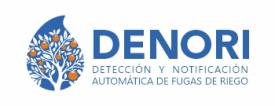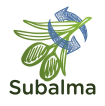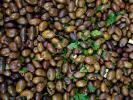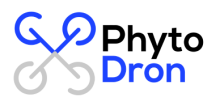OLIKE Operational Group: Economic and ecological improvement of the table olive cooking process
- Type Operational group
- Status In progress
- Execution 2023 -2025
- Assigned Budget 295.313,00 €
- Scope Autonómico
- Autonomous community Andalucía
- Project website GO OLIKE
Pt. 1. Detailed Study of the State of the Art Study of current water consumption in the table olive dressing process: The olive cooking process generates approximately 3.5 liters of waste per kilo of olives produced. This project seeks to reuse the liquids used in each process to reduce this level of waste by approximately 90%. Current management of process water: Study and characterization of the water used at each point in the table olive production process to assess the points and conditions at which the reuse of said process water can be implemented. Management of effluents generated by the dressing industry: These industries deal with governing and fermentation liquids with a very specific physicochemical composition (pH <4, salt >5%, and high BOD and COD), making their management for disposal very difficult. That's why we must reuse as much liquid from processes within the industry as possible, and we will design forced evaporation equipment to reduce the need for evaporation ponds.
ACTION Pt. 2. Plan and develop data acquisition. Requirements analysis. Study the different process waters used in table olive production. Plan and develop an analysis plan and subsequent actions on the obtained liquids for their fully guaranteed reuse. Always focus any process modifications and improvements on maintaining the quality of the finished product.
ACTION Pt. 3. Integration of Information into a Database Efficient Data Access: By centralizing information, different teams can access data quickly and easily, facilitating joint analysis of environmental conditions and evaporation capacity. Real-Time Analysis: Implementing a real-time access system allows drying conditions to be adjusted proactively, optimizing energy consumption and improving productivity. Continuous Monitoring: Integrating information into a relational database allows for continuous monitoring and storage of historical data, facilitating long-term evaluation of the evaporation system's impact.
ACTION Pt.4. Prototype design After studying the working conditions and evaporation needs, a prototype design has been made that will regulate its production to the availability of photovoltaic energy to make said evaporation much more efficient.
ACTION Pt. 5. Manufacturing and validation of the prototype Optimal System Operation: The prototype must evaporate the generated effluents, adjusting to the production of electrical energy using photovoltaic solar panels. Evaporation results and performance can be assessed to calculate the needs at industrial levels in terms of sizing the evaporator machine and possible use of batteries to store excess electricity production through sunlight so that the evaporator operates for most of the day regardless of the hours of sunlight.
ACTION Pt. 6. Drafting final reports Provide an overview of the project's results and achievements. Partial drafting of the final technical reports detailing the progress, results, and conclusions of each project action.
ACTION Pt. 7. Communication and Dissemination Website: The project website has been created. However, given the short time it has been available, visits have not yet been counted. 1 Press release: The initial press release for the project has begun, with the intention of publishing it by the end of August. Social media: The project's LinkedIn and Facebook profiles have been created. However, as with the website, visits have not yet been counted given the short time they have been operational. Audiovisual: Recordings have been made, and work has begun on the initial video presentation of the project. Graphic designs: A project brochure and a roll-up have been designed and will be used in different stages of project communication development.
- Project management and coordination.
- Detailed study of the state of the art Planning and developing data acquisition.
- Requirements analysis.
- Integration of information into a database.
- Predictive models Prototype design.
- Manufacturing and validation of the prototype.
- Field trials.
- Writing final reports.
- Dissemination and Dissemination
The project addresses the problems of high water consumption in the olive dressing industry and the high cost of evaporation of the effluents generated during the olive dressing process. To address these issues, various studies and tests will be conducted on the water generated throughout the process for its regeneration and reuse. A prototype of a comprehensive HVAC (Heating Ventilation Air Conditioning) system will be developed by introducing very dry air channels capable of capturing moisture from the wastewater generated in the olive dressing industry (causing forced evaporation of the effluents), improving the sustainability, energy efficiency, and efficiency of the industrial process in a climate change scenario.
- Coordinator/entity name: SAT nº2423 Albarizas
- Postal address: Camino de Torremolinos, 46, Lucena, Córdoba
- Coordinator/entity email: dlara@albarizas.com
- Telephone: 957500661
- S.A.T. nº2423 Albarizas
- S.A.T. Nº2423 ALBARIZAS (dlara@albarizas.com)
- Keyter Technologies (idi@keyter.es)
- CETEMET (j.rodero@cetemet.es)
- COOPERATIVAS-AGROALIMENTARIAS (oparra@agroalimentarias-andalucia.coop)
- S.A.T. nº2423 Albarizas







